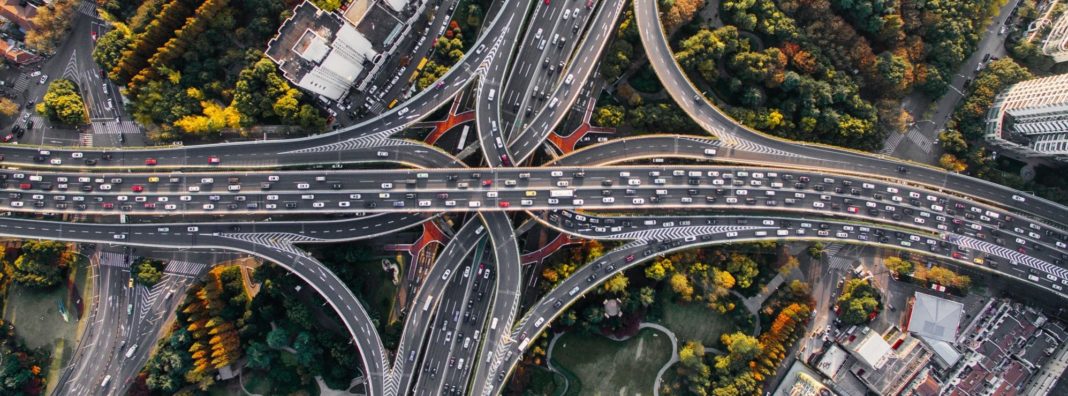
Discussions about the future of work often focus on the relationship between worker satisfaction and productivity. While we know that happy and fulfilled workers are more productive, an often-overlooked factor in workplace satisfaction is how we get to work in the first place. The great American commute continues to get longer, and this trend is having negative impacts on workers, the environment, and overall productivity of the economy as a whole.
Recent data from the U.S. Census Bureau shows how the average American commute has changed over the last few decades. In 2018, the average American worker spent 27 minutes driving to work and another 27 minutes driving home. That represents just a small change (two minutes extra each way) from 2009. But the difference in weekly commutes over the past few decades is much more drastic. In 1980 workers spent a full hour less driving each week than they do today.
Over the course of a year, all this driving adds up. In 2018, the average worker spent a whopping 225 hours per year driving. That’s the equivalent of spending nine full days in the car. That means the time that could have been spent taking that vacation to Europe, spending time with your kids, or working on a new side hustle are now gone.
Data visualizations from the US Census also show how the average commute time varies by region. Workers who live in big cities and on the coasts tend to bear the brunt of the longest commutes. That makes sense, given job growth and economic opportunity are also increasingly concentrated in those areas. It also reflects the rising cost of housing in urban centers. In Los Angeles, for example, about 600,000 residents spend at least half their income on rent.
Source: US Census
Some level of commuting may be necessary to get workers from where they want to live to where they can be most productive. But research suggests that longer commutes take a real toll on people’s lives. In March of 2019, researchers in the UK found that longer commutes lead to lower satisfaction with both jobs and leisure time, increased strain, and negative impacts on mental health. Other researchers have found that adding 20 minutes to your commute each day has an equivalent effect on job satisfaction as a 19 percent pay cut.
Commuting also contributes to environmental issues like local air quality by creating emissions from driving or taking public transit. Quartz found that, despite pushes for carpooling and the use of public transportation, most people still commute by car. In 2018, over 90 percent of commuters still got to work by car. And since most people who drive to work drive alone, that means a lot of mostly empty vehicles are driven to work each day. It also means a lot of valuable urban real estate is taken up by parking lots.
How can we work to shorten commutes, or avoid them altogether to get happier, healthier, more productive workers?
One of the primary reasons for longer commutes is the rising cost of housing in and around U.S. cities with lots of job growth. And research suggests that zoning restrictions that prevent high-density development provide caps on building heights, and require minimum lot sizes all drive up the cost of housing. Rules mandating a minimum amount of parking for each building or business also drive up costs and contribute to sprawl.
One of the simplest ways to reduce the need for workers to commute in from the suburbs is through zoning reform that allows for more affordable housing options. Of course, like all reforms, zoning changes would need to be done in the right way to avoid unintended consequences. But thoughtful zoning changes that allow for mixed-use and higher-density development in urban areas could help make housing more affordable, allowing workers to live closer to where they work.
Another option to combat long commutes is by reforming transportation policy. Time-of-day pricing or variable tolling could be used to help reduce congestion by encouraging people to reduce non-essential trips or move them to less busy times of the day.
Public transit also plays an important role, but not all projects are created equal. Urban planner and structural engineer Christof Spieler analyzed every rail and bus transit system in the U.S., drawing out lessons for how to make those systems more effective. Spieler finds that commuters don’t care what type of technology is used. Still, they do care about things like walkability, connectivity, travel time, reliability, and, most importantly, whether transit goes where they need to go. Planners can help make public transportation work better for workers by ensuring that transit projects connect areas where people live to employment centers.
Finally, some workers may be able to ditch their commute altogether by working remotely. The American Community Survey showed that in 2018, 76 percent of workers drove to work alone, while 9 percent carpooled, and 5 percent took public transit. Another 5 percent worked from home, avoiding a commute altogether. And trends show that the share of Americans working from home continues to rise. As more companies adopt flexible work schedules that allow people to work remotely, some or all of the time, commute times may fall to zero for some lucky workers.
Source: Quartz
If your wish list this Christmas includes a shorter commute, there is hope in sight. Reforming local zoning rules and creating common-sense transportation policy can help reduce commute times for those who need to travel each day for their nine-to-five. And broader workplace changes that allow more people to work from home will likely help contribute to shorter or no commute as well. All of this is likely to add up to happier, more productive workers who spend more time with their loved ones and less time on the road commuting.

